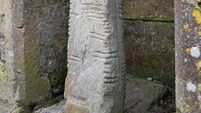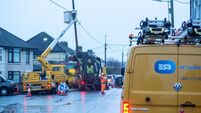‘Revolutionary’ method of analysing baby brainwaves could save vulnerable newborns

UCC researchers have discovered a revolutionary method of analysing newborn babies’ brainwaves; Prof Andriy Temko, Electrical and Electronic Engineering; Sergi Gomez-Quintana, CRT-AI and Electrical and Electronic Engineering; Andreea Factor, Anatomy and Neuroscience; and Dr Emanuel Popovici, CRT-AI/INSIGHT Centres, Electrical and Electronic Engineering. Picture: Ralph O’Flaherty.
A “revolutionary” way to analyse babies’ brainwaves using sound has been discovered by a research team working at University College Cork (UCC) with the potential to save many vulnerable newborns.
This new approach uses sound rather than images to analyse brainwaves and detect neonatal seizures with electroencephalography (EEG) monitoring. It is assisted with artificial intelligence (AI).










